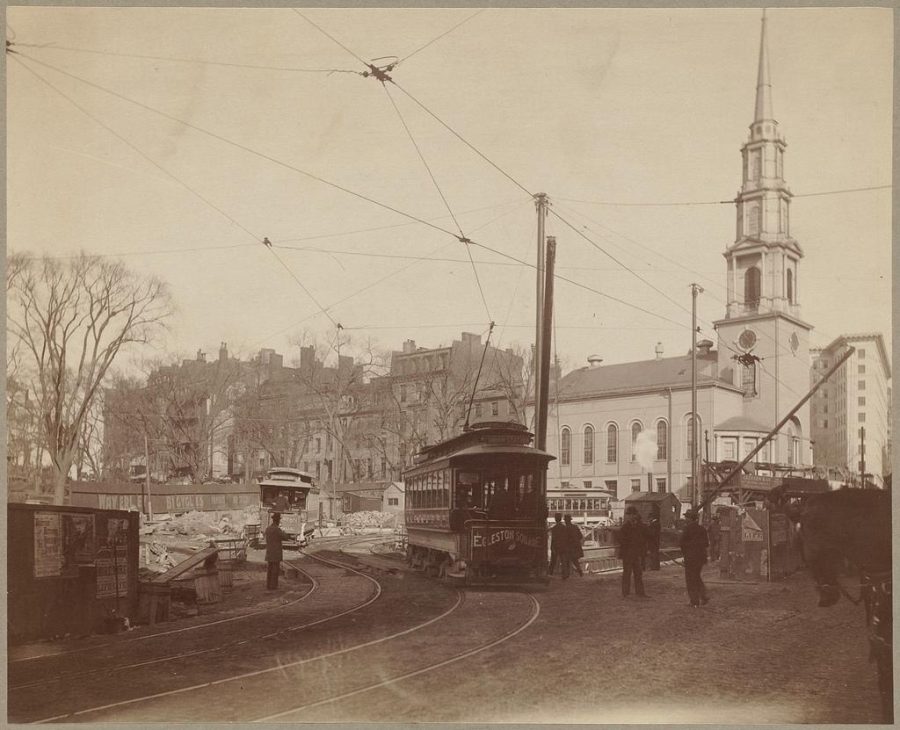Photo courtesy Boston Public Library.
Part 1: Exploring the MBTA’s History
Boston’s first subways ran under Tremont Street, the remnants of which are still part of the city’s historic subway system. At the time, several trolley routes connected the city with its suburbs.
Throughout history, other rapid transit lines were built, including the now-defunct Atlantic Ave Elevated line. In the 1960s, the Rapid Transit, streetcar, and subway lines that crisscrossed Boston were consolidated into the MBTA system—the “T”.
The original Red Line included only the Ashmont branch—up to Harvard—and the Mattapan Trolley. The Blue Line was also in operation, and the older Orange Line comprised elevated sections from Forest Hills down Washington Street, extending to Everett rather than Malden.
The Green Line was a combination of the remaining trolley lines, leading to some unusual routes. The A branch (Watertown Yard) and the latter half of the E branch (Arborway) operated through street traffic. The B (Boston College) Line, C (Cleveland Circle) Line, and the first segment of the E Line ran on designated lanes in the middle of streets, while the D (Riverside) line utilized a former railway.
The A Line was shut down just a few years after the T’s inception, replaced by the 57 Bus route.
The Red Line underwent multiple expansions during the 1970s and 1980s, adding a new branch out to Braintree on its southern side, and extending farther into Cambridge to Alewife. However, a proposed extension through Arlington to route 128 was vetoed, leaving us with the deteriorating Alewife station.
In the late 1980s, the Orange Line’s alignment was altered, moving from its elevated section through Roxbury to the Needham Line commuter rail alignment in Jamaica Plain. Concurrently, the E-line’s street-traffic stage (past Brigham Circle) was indefinitely shut down.
This ushered in an era of stagnation, except for the Green Line E branch extending back to Heath Street in street traffic, and the addition of the Assembly stop to the Orange Line in Somerville.
In 2022, the Green Line was extended through Somerville into Medford, with the D branch taking a one-stop detour to Union Square along the Fitchburg line, while the E branch went to Tufts University and College Avenue along the Lowell line.
Currently, the only planned extension in progress, in some form, is a one stop-extension of the Blue Line to Charles/MGH, which would connect with the Red Line, and eliminate the Bowdoin Stop en route.
Other proposals, including extending the Orange Line to Roslindale, the Blue Line to Lynn, substituting the Fairmount commuter rail with rapid transit, among others, are also included in certain long-term MBTA plans.
Editor’s note: This is the first article in a five-part series on fixing the MBTA.

